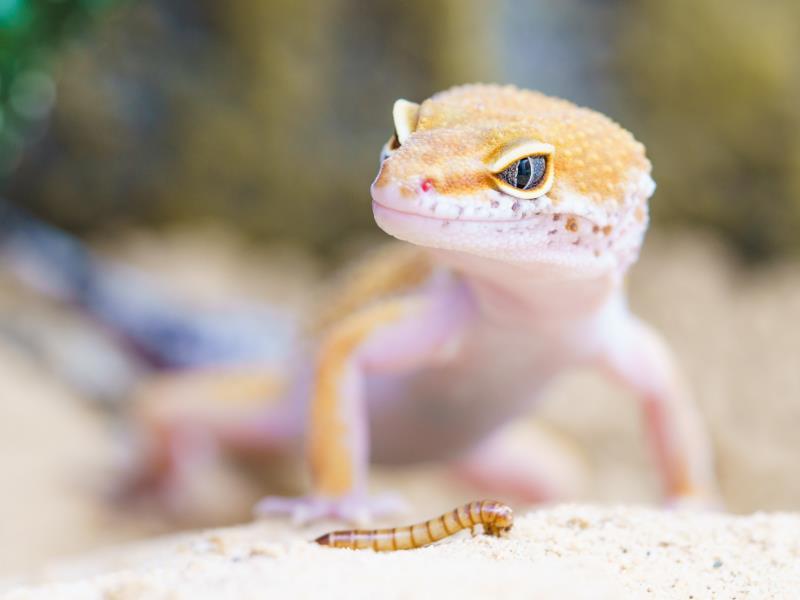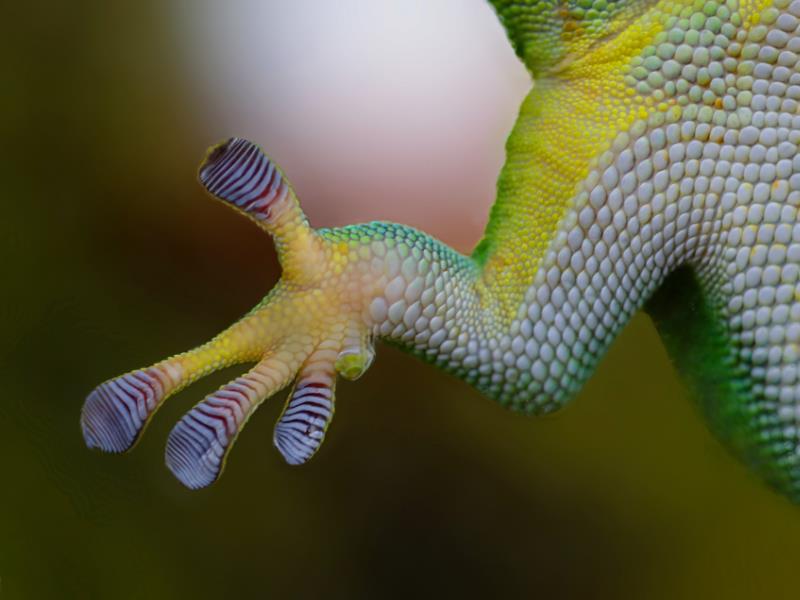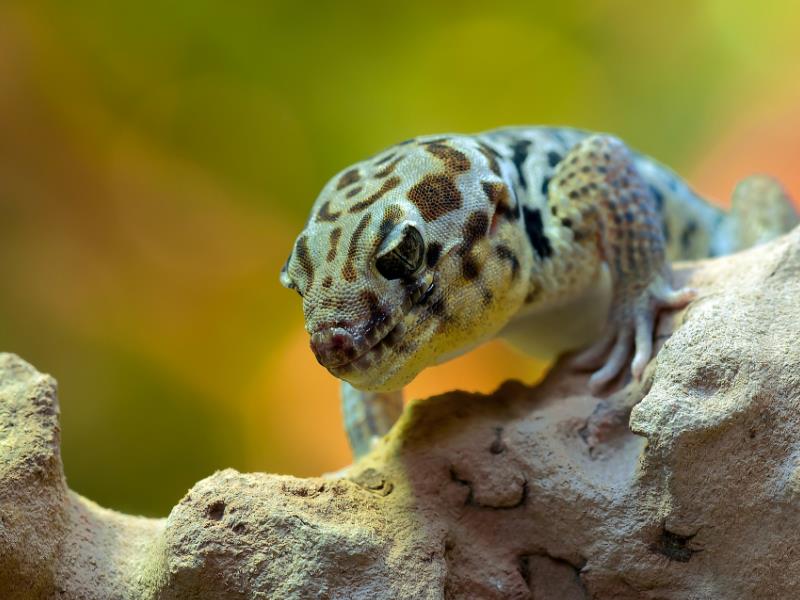Geckos are part of the order Squamata, currently the largest order of reptiles. Specifically, geckos belong to the infraorder Gekkota, and there are roughly 1850 species of geckos spread throughout the world. Like many lizards, geckos can tolerate some extreme conditions, which has helped them spread to every continent on the planet except for Antarctica.

A gecko standing over food
What Do They Look Like?
As with many other pests, due to the wide biological diversity of the ~1850 species of geckos, it can be difficult to provide an overarching physical description of geckos that will apply to all species.
With that said, the average gecko will range in size from 1.6 to 60 centimetres, and, like most lizards, they are quadrupeds, meaning they have four feet and four legs. They can range in colour from a dull grey to something dazzlingly iridescent, though some of the more common species of geckos found in Australia are typically dully-coloured with some splashes of colour, such as the predominately-black-and-white Golden-tailed Gecko.
Only the family Eublepharidae have eyelids; all other geckos instead have a transparent membrane, the cornea, that forms the outer surface of the eyeball. The iris of a gecko contains a fixed lens that can expand or contract depending on the light conditions, much like those of a human being. However, since the majority of geckos cannot blink due to the lack of eyelids, they are forced to find alternative means to remove dust and dirt from their eyes while ensuring their eyes remain moist. Generally, geckos will choose to lick their own eyelids to solve this problem.
In about 60% of species, the toes of a gecko are tipped in highly-specialised toe pads, which allow the gecko the ability to grip onto both smooth and vertical surfaces with ease, allowing them to traverse landscapes that would otherwise be impossible to travel. As a result, these species of geckos will routinely make nests within human buildings, as they can easily cling to walls and roofs, out of the way of their host, while still managing to scavenge their diet of insects and pests.
Interestingly, these adhesive pads have entered gecko evolution multiple times throughout history, and at least nine varieties of gecko have since lost their adhesive pads. The exact mechanic behind the functionality of the adhesive pads is academically contested, and while it was largely believed to be a function of van der Waals’ forces until recently, fresh research would suggest that it may actually instead be a function of electrostatic forces.

A gecko’s sticky feet, pressed up against glass
When Are They A Threat?
Geckos typically do not pose a threat to humans and, unless directly and repeatedly provoked, will not bite a human. However, if the larger species are adequately provoked and are faced with no other option of escape, they may elect to bite their aggressor, and those bites can be powerful enough to break through the skin and draw blood.
In most circumstances, though, the gecko is not only entirely docile, but the Common House Gecko can even be a welcome addition to many homes. There are many insects and pests that form the diet of the Common House Gecko, including mosquitoes and moths, and their diet in combination with their low risk means it may be wisest to leave any gecko you find resting on your ceiling alone.
How Do They Form New Nests?
Geckos are normally nocturnal creatures and have excellent night vision to match, and in low light settings, their colour vision may be up to 350 times more sensitive than that of a human being. During the day, geckos will hide in any confined space they can find, including beneath dead bark, rock crevices, or spider holes. Once night falls, they will begin to roam in search of food, which includes a variety of insects and pests.
Unlike many other lizards, geckos have a wide range of vocalisations, making them incredibly social creatures. Different species of geckos will produce different vocalisations, though Tokay Geckos are the species regarded as having an exceptionally loud mating call.
All geckos will shed their skin regularly, but where mature geckos may only shed once every two to eight weeks, dependant on the species, young geckos may shed as often as once a week before slowing down in maturity. The process of shedding skin can be lengthy, and so, to speed it up, many geckos opt to peel the skin off of their bodies where possible and eat it.
What Risk Do They Pose?
Geckos are non-venomous, and while their bite can be known to break human skin in the rare circumstance that a gecko is actually provoked into attacking a human, there are no known major illnesses associated with it. Similarly, the gecko itself isn’t known to notably spread any particular diseases or ailments, and beyond the regular precautions one should take with wild animals and insects, there are no significant risks associated with having a gecko in your home. Some even choose to keep pet geckos in heated terrariums, and they make for excellent pets for anyone who doesn’t have a lot of time to dedicate to their companion.
Is There Anywhere In Particular They’re A Bigger Threat?
Due to their diverse nature and high levels of temperature resistance, there is very little you can do to avoid geckos. With that said, some creatures, such as rats and stoats, may be able to prey on gecko populations to such an extent as to drive them to ’extinction’ locally. It is believed that this is what happened to the New Zealand Kawekaweau, the largest known species of gecko, before its extinction in the late 19th century, possibly at the hands of the introduced population of rats.











